The police force for the Michigan State College was established in 1928 when the first uniformed and armed officer, Donald J. Bremer, began patrolling the college campus. To assist with patrol duties, Officer Bremer received support from student watchmen who were stationed in various buildings across campus. During that time, calls for service were operated by the college telephone operator who would notify Officer Bremer by turning on white lights mounted on the powerhouse tower whenever police services were needed on campus. In 1934, a second officer was hired to assist Officer Bremer with responding to calls for service.
In 1937, an agreement was made with the City of East Lansing for the East Lansing Police Department Chief of Police to act as a supervisor for the campus police force. Under the East Lansing Police Department administration, the Michigan State College police force utilized three vehicles equipped with one-way radios to monitor the State Police network.
On September 23, 1947, the Michigan State College police force separated from the East Lansing Police Department. Arthur F. Brandstatter was appointed as the first Chief of the Michigan State College police force and defined the direction and goals of the department. After gaining independence, the Michigan State College police facility began as a set of quonset huts on the property, where the Jack Breslin Student Events Center currently resides. In 1975, a new facility was established on Red Cedar Road, where it still stands today on the campus of Michigan State University.
Police Chiefs and Directors
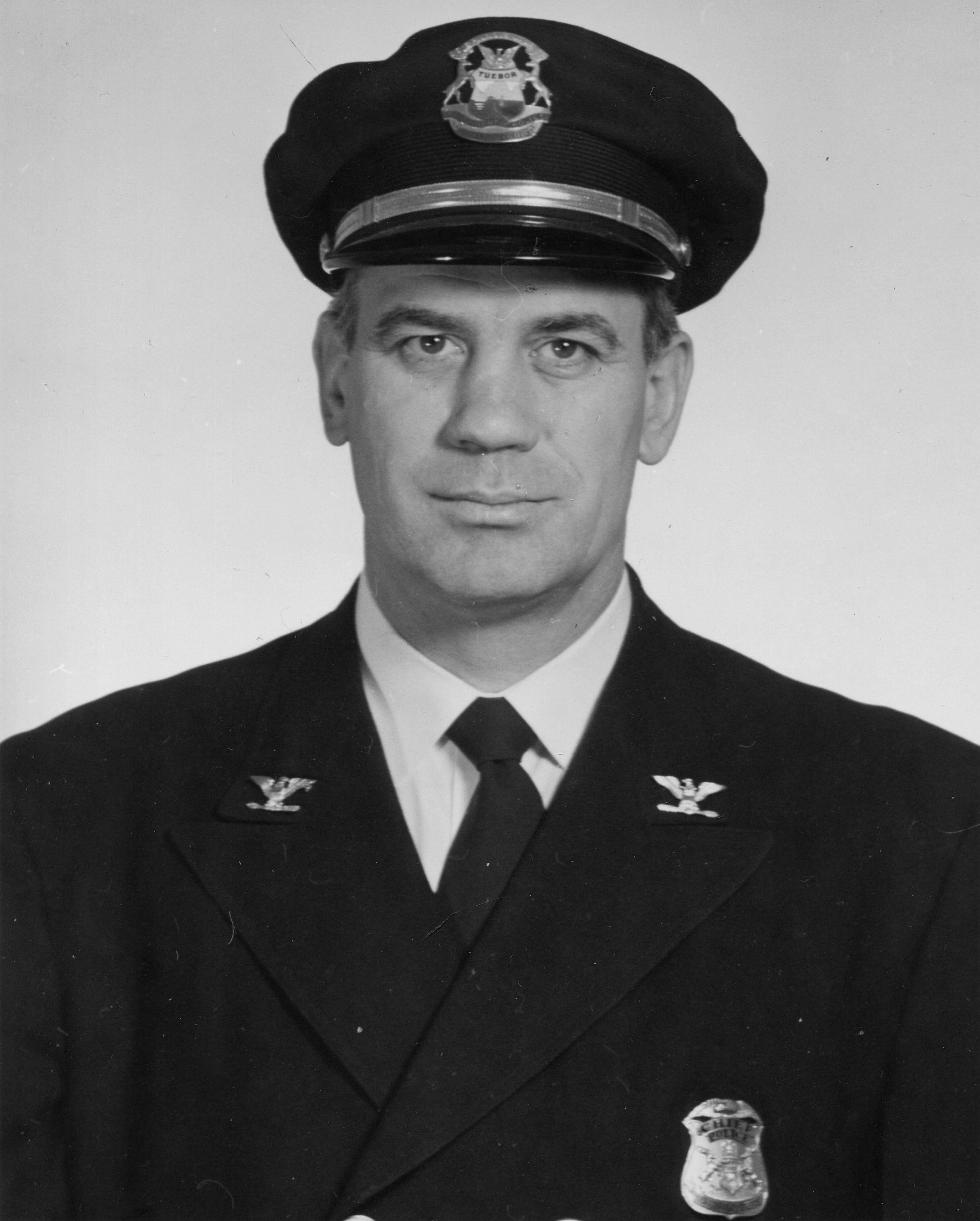
Chief Arthur F. Brandstatter
1947 - 1960
As the first Police Chief at Michigan State College, Arthur F. Brandstatter established the direction and goals of the organization. Police powers were defined, and the organizational presence strengthened which formulated the concept of public safety on campus. Brandstatter also served as the Director of the School of Police Administration and Public Safety.
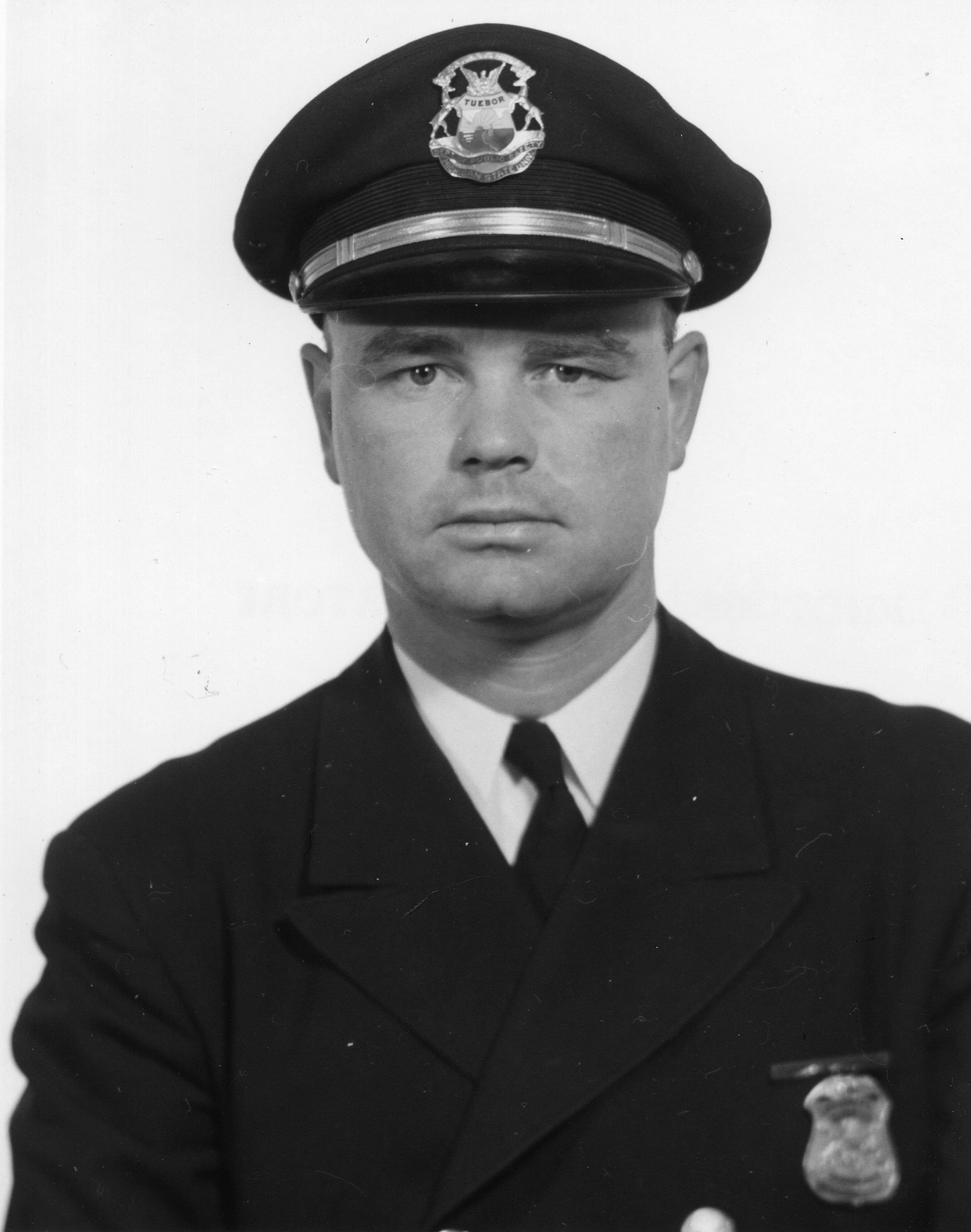
Chief Richard O. Bernitt
1960-1986
Richard O. Bernitt was known as the guiding force in developing the organization to respond to all public safety needs within the campus community. The years Bernitt served are characterized by the elevation of professional standards and the development of administrators. Bernitt was a firm believer in the need for a college education, which over time led to the department requiring a minimum 4-year degree to serve as a police officer. That requirement still stands today.

Chief Bruce L. Benson
1986-2002
Bruce L. Benson, Ph.D.adopted the concept of community policing, which created a shift in attitude from neutral policing to close personal involvement between the officers and the members of the community. The department's community policing program became one of the first in the country to be implemented on a college campus. Benson also utilized grant funding opportunities to increase the workforce at MSU.
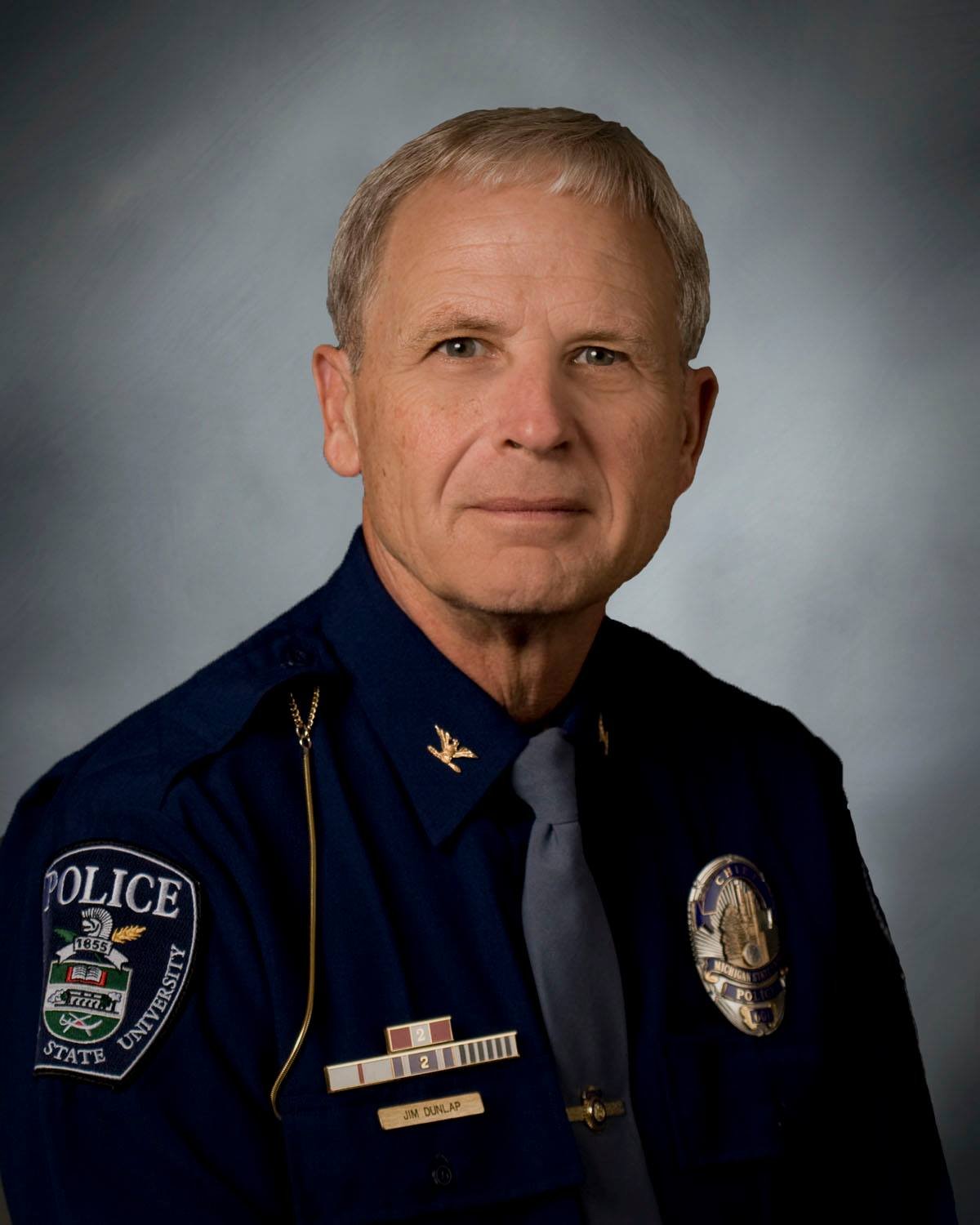
Chief James H. Dunlap
2002 – 2018
James H. Dunlap expanded the department’s commitment to community policing to include all members of the department. Under Dunlap’s leadership, the department continued to grow as one of the largest police departments in the state of Michigan. At the time of his retirement, Chief Dunlap had served the department for 50 years (1969-2019) and is the longest-serving member in the history of the department. Under his direction, the department advanced with technology and resources to assist law enforcement. Innovative units and teams were developed to include the Bike Unit, Motor Unit, Inclusion and Anti-Bias Unit, Behavioral Threat Assessment Unit, Digital Forensics and Cyber Crime Unit, Special Victims Unit, Ingham Regional Special Response Team, and the Ingham Regional Crash Investigation Team. In October 2017, the department became accredited in emergency management by the Emergency Management Accreditation Program as the fifth institution of higher education in the nation and only the second program in the State of Michigan. Chief Dunlap retired on December 31, 2018 and served as an advisor to the MSU President until April 2019.

Chief Kelly A. Roudebush
2019 – 2020
Kelly Roudebush was selected on November 27, 2018 by Interim President John Engler to become the fifth Police Chief and Director on January 1, 2019. Chief Roudebush is the first female Police Chief and Director in the history of the department and previously served as the Field Services Bureau Commander. Chief Roudebush was promoted from Captain on January 1, 2018 and previously commanded the Uniform and Special Events Divisions. She joined the department in 1994 and has worked closely with several units/departments across campus and in the local area, including Residence Education and Housing Services and the Ingham 9-1-1 Center Advisory Board. Chief Roudebush took medical leave in July 2020 to battle breast cancer. During her 26 years at the department, she served as a field training officer, canine handler, patrol shift commander, training and special events security coordinator, and a threat assessment team commander.
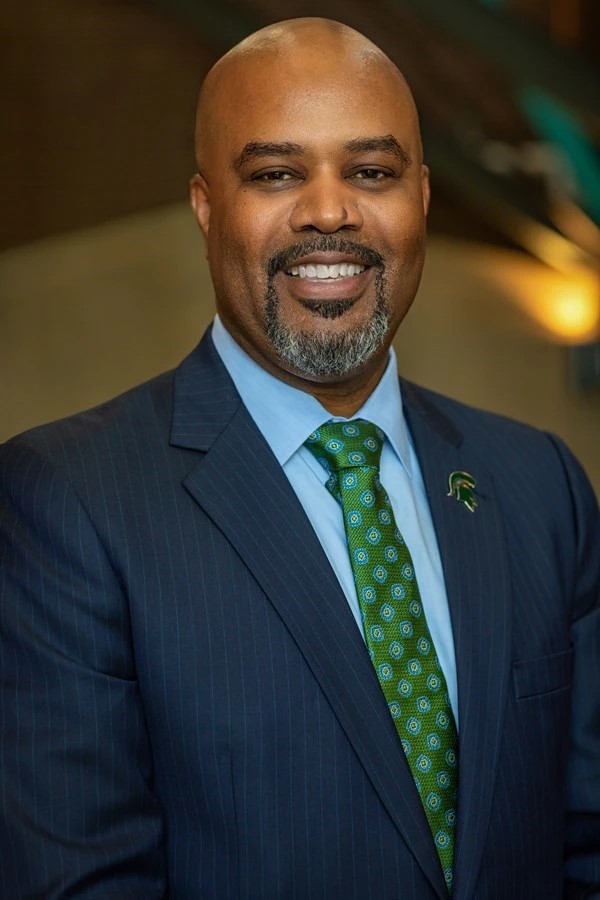
Vice President and Chief Safety Officer Marlon C. Lynch (formerly Vice President for Public Safety and Chief of Police)
2021 – 2023
In his nearly 25-year career in law enforcement, Vice President and CSO Marlon C. Lynch has led some of the largest police departments in the country, often in urban settings, including the nationally recognized program at the University of Chicago. During his time at New York University, he was involved in both domestic and international security efforts. While he has held positions across the nation, VP and CSO Lynch has always been a Spartan. He holds a Bachelor’s degree in criminal justice from MSU and a Master’s degree from Boston University.
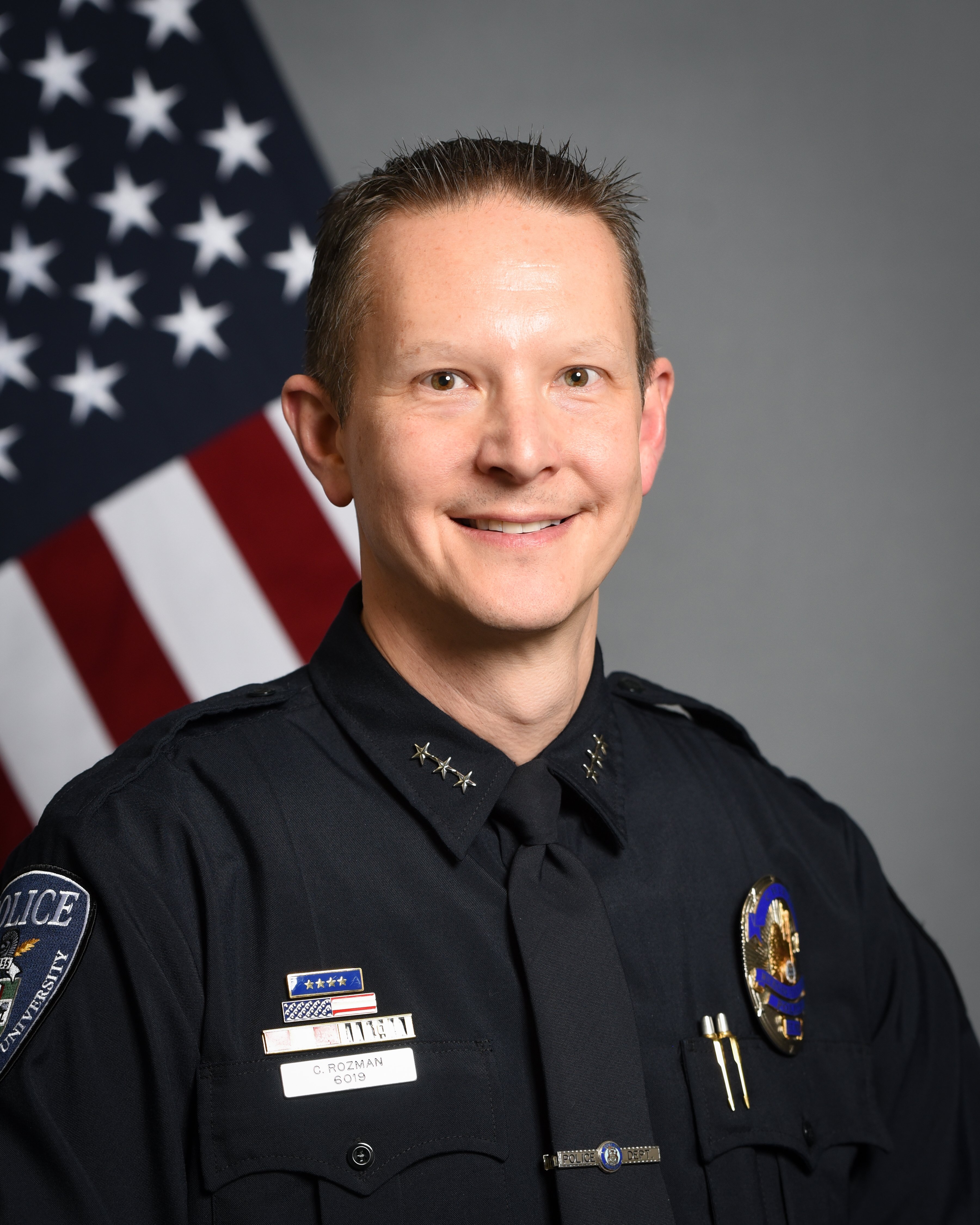
Chief Chris M. Rozman
2023 – 2024
Chris Rozman is currently the Deputy Chief, Police Division, at Michigan State University and has been with the department since 2001. Chief Rozman has served in a variety of roles including patrol, field training officer, K9 handler, detective and detective sergeant, patrol sergeant and lieutenant, Investigative Division Captain, Public Information Officer, and most recently Interim Deputy Chief of Police overseeing all field operations, patrol services, and community engagement. Chief Rozman graduated from Michigan State University with his Bachelor of Arts degree in Criminal Justice and from Cleary University with his Master of Science degree in Culture, Change, and Leadership. He strives to create a positive organizational culture for officers and employees to succeed.
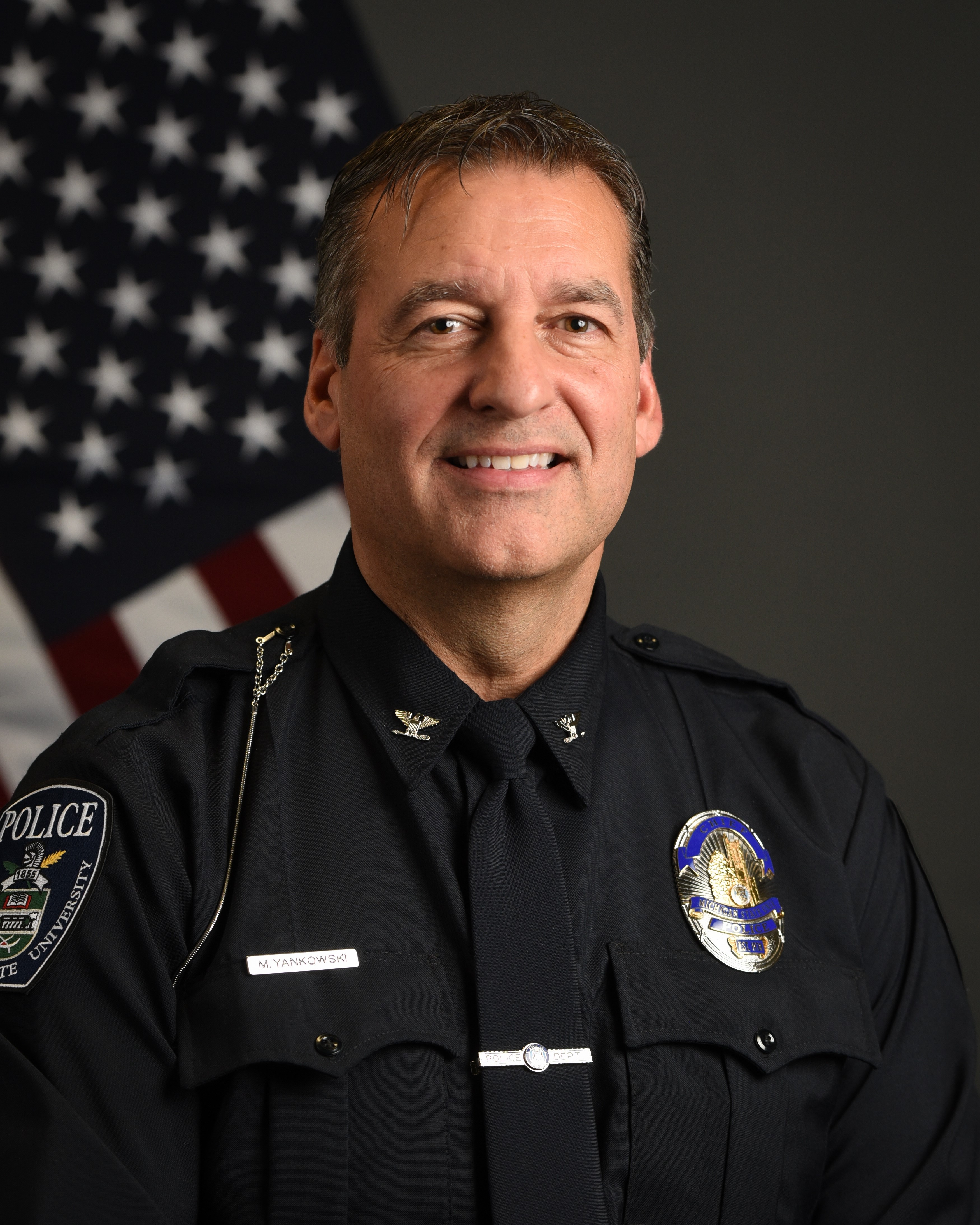
Chief Mike Yankowski
2024 - present
Mike Yankowski currently serves as the Chief of Police and Executive Director of Public Safety at Michigan State University (MSU). He joined MSU in October 2019 as the Institutional Ethics and Compliance Assistant Director for the Office of Audit, Risk and Compliance. While at MSU, Mike established the first-ever University Policy Management Program and University Policies website, along with the Records Management and Retention Program.
Before his tenure at MSU, Mike enjoyed a distinguished 25-year career with the Lansing Police Department (LPD) with the last seven (7) as the Chief of Police. During his tenure as the Police Chief, he was instrumental in implementing initiatives such as Advocates and Leaders for Police and Community Trust (ALPACT), the Lansing Violent Crime Initiative (VCI), Gang Resistance Education and Training (G.R.E.A.T.), and the LPD Body Worn Camera Program. In 2010/2011, Mike was named the City of Lansing Employee of the Year.
A graduate of Ferris State University with a degree in criminal justice, Mike also completed the Michigan State University School of Staff and Command, where he was unanimously elected Class President. He is a member of the Police Executive Research Forum (PERF) and the International Chiefs of Police (IACP).
